Euclid’s First Science Photos Show 16 Million Cosmic Objects in Dazzling New Light
![]()
Nearly 10 months after its first successful test photos and six months after its first actual images, the European Space Agency (ESA) has finally released the first full-color science photos from its Euclid space telescope. The wait was worth it.
Euclid, built by more than 2,000 scientists from 300 international institutes, is sharing the second Lagrange point (L2), about a million miles from Earth, with the James Webb Space Telescope. However, Euclid’s purpose is much different. The fancy new space probe, described by ESA senior adviser Mark McCaughrean as “an anti-JWST,” is focused on a vast swath of the sky rather than tiny sections.
While Webb is built to study specific objects, Euclid aims to collect so much data about such a huge part of the sky that scientists will be able to build a three-dimensional map of the Universe. This map will cover about 35 percent of the sky, include billions of galaxies, and help shed light on the mysterious dark matter and dark energy that scientists believe underpin the workings of the Universe and will help explain how it evolved.
Euclid’s first five full-color science images, captured in just 24 hours of observation, show a Hubble-like field of view of the cosmos, albeit with remarkable resolution that the venerable Hubble Space Telescope could only dream of.
Euclid has 36 CCD image sensors stitched together, each about 4,000 by 4,000 pixels, totaling about 600 megapixels. Each of Euclid’s images, if viewed in full resolution, would require 300 high-definition TVs to display. Thanks to Euclid’s resolving power, large mirror, field of view, and speed, it observes more of the Universe in one day than Hubble was able to do in 25 years.
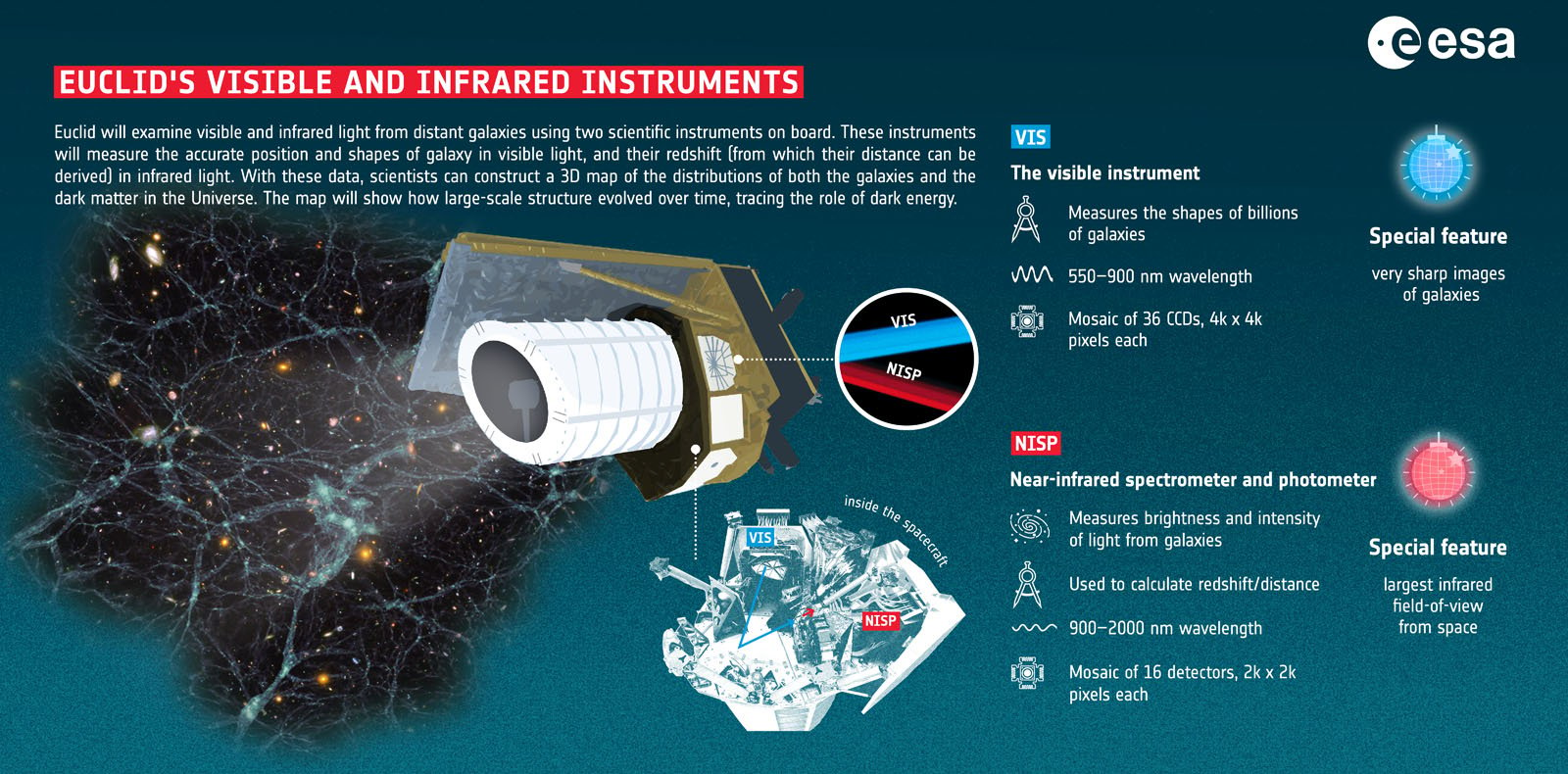
On its first full day of scientific operations, Euclid observed 11 million cosmic objects in visible light and an additional five million more in infrared light. Talk about a busy and productive first day!
Abell 2390
The first of Euclid’s images has a very Hubble-like feel, showing more than 50,000 galaxies in the frame. Thanks to Euclid’s resolution, scientists can more accurately measure the distances between each galaxy in the frame and measure masses. Some of these galactic clusters are exceptionally massive — up to 10 trillion times that of the Sun — with much of it being dark matter.
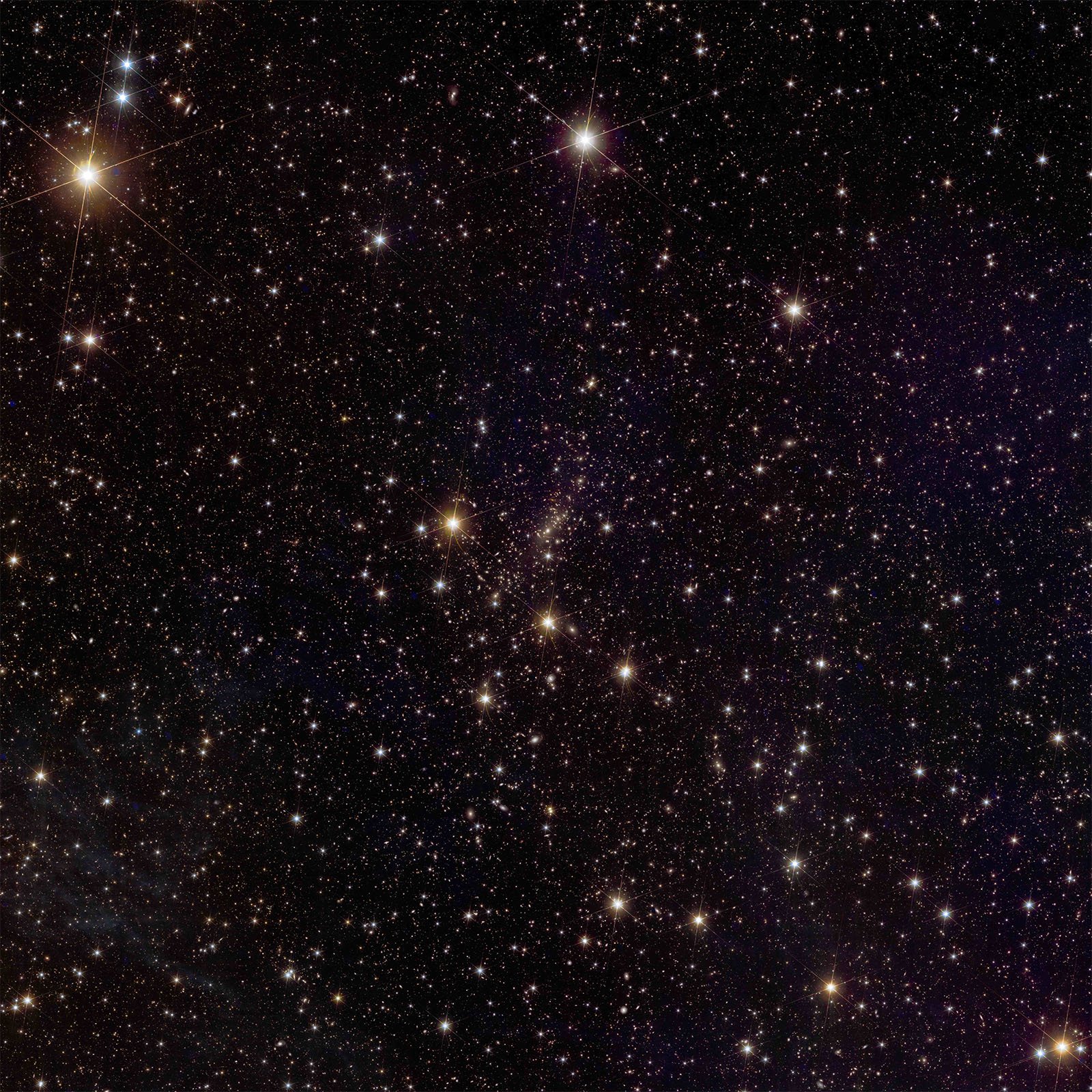
“Galaxy clusters like Abell 2390 are large repositories of dark matter, making them ideal astrophysical laboratories for studying its properties. Once Euclid begins its main survey it will capture many thousands of galaxy clusters over around one-third of the sky, obtaining information we can use to make unprecedented constraints on the dark Universe,” the ESA explains.
This image is a powerful example of Euclid’s strengths, as it includes gravitational lensing, the phenomenon by which Euclid will help physicists measure the amount and distribution of dark matter in a galaxy cluster.
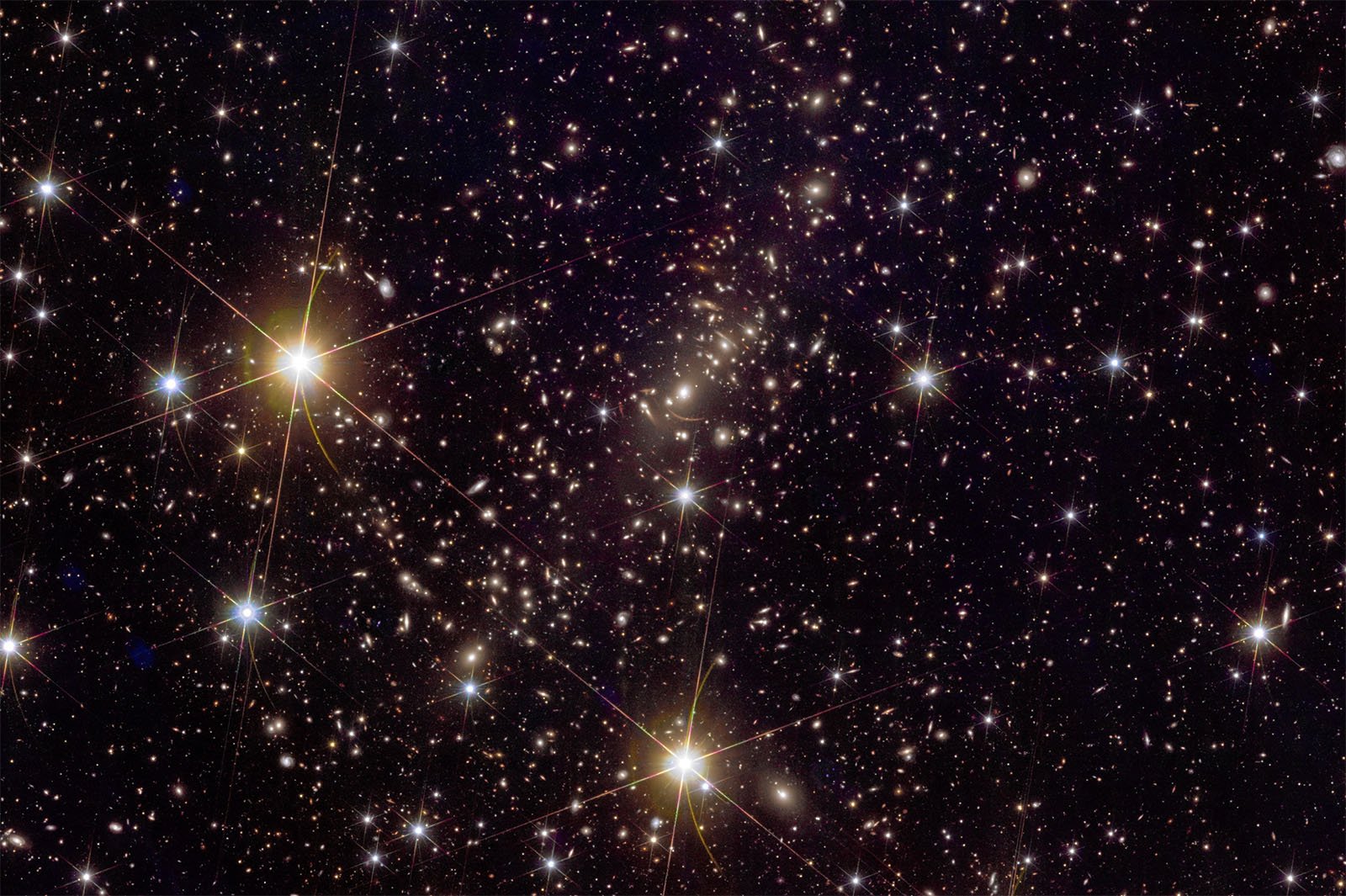
Another cutout view shows “intracluster light,” the light emitted by stars that have been ripped away from their parent galaxies. Using enhanced white-gray coloring, this type of light also hints at how dark matter is organized.
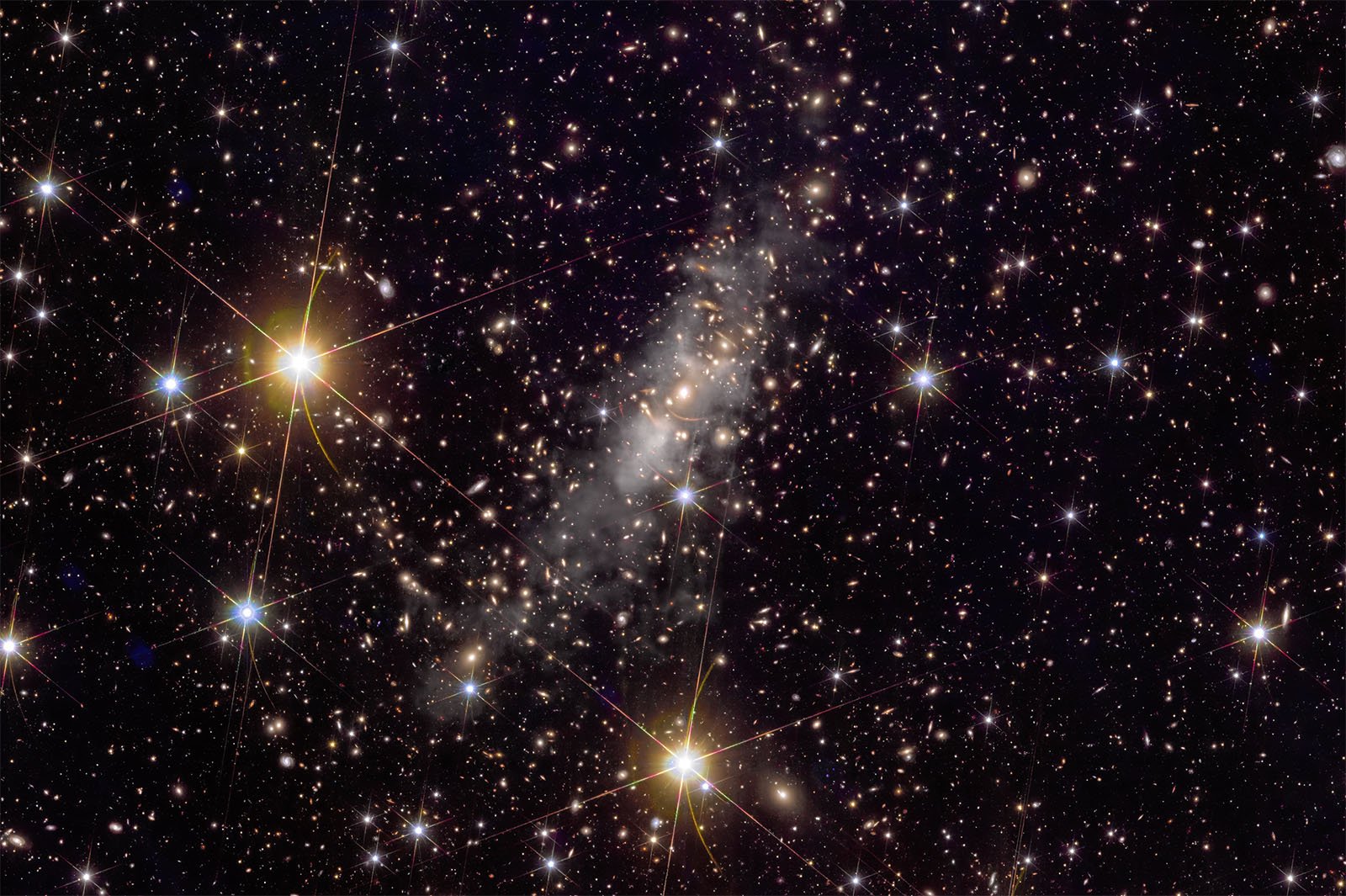
Abell 2390 is about 2.7 billion light-years away, located in the constellation of Pegasus.
Messier 78
A popular target for astronomers, Euclid looked at Messier 78 in incredible and colorful new detail. The image, perhaps more than any space photo, has a three-dimensional feel.
Messier 78 is a stellar nursery enveloped in cosmic dust, which Euclid peered through its infrared camera. Compare this to how Hubble viewed Messier 78, and it’s obvious the revolutionary jump forward in imaging technology on offer with Euclid.
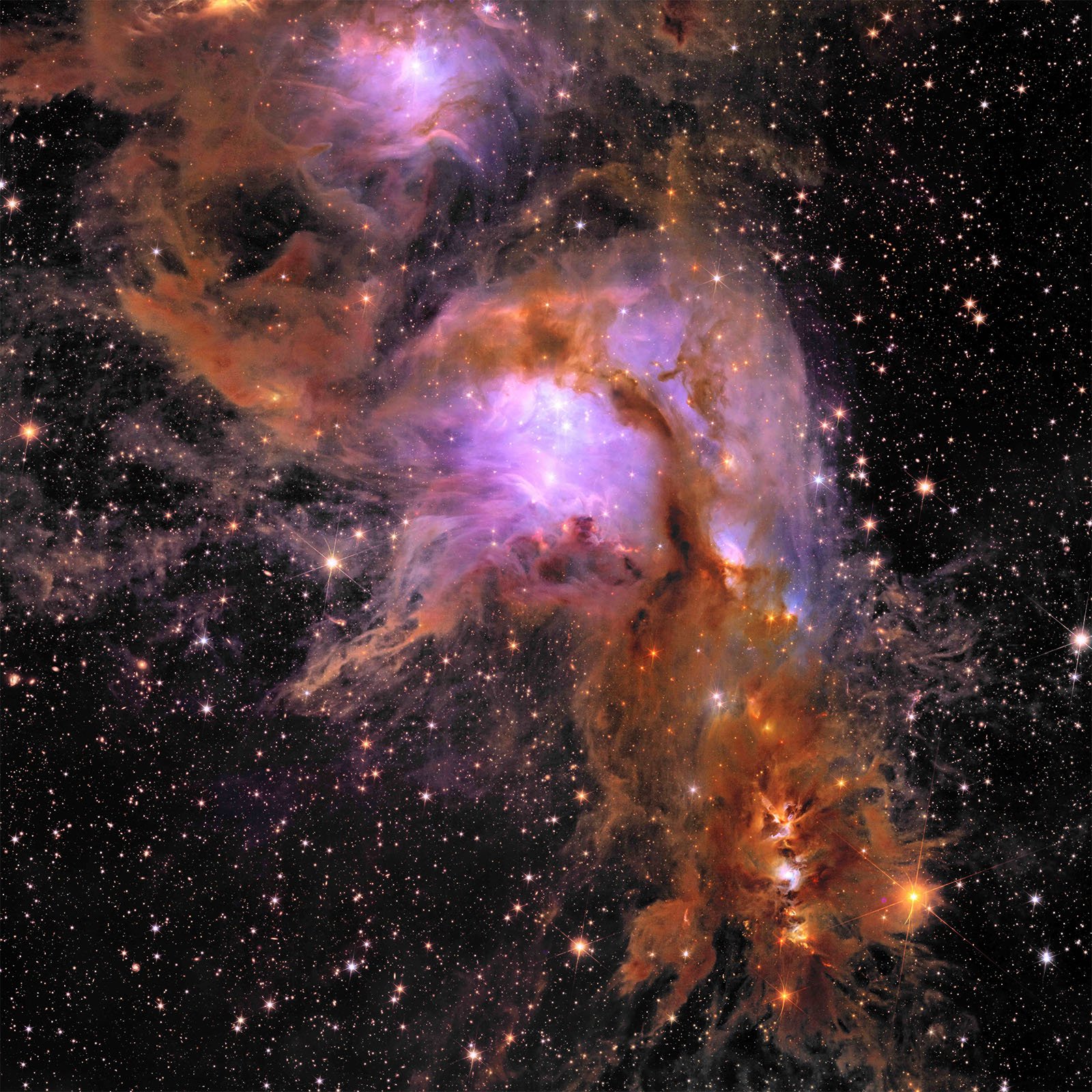
“Euclid’s instruments can detect objects just a few times the mass of Jupiter, and its infrared ‘eyes’ reveal over 300,000 new objects in this field of view alone. Scientists are using this dataset to study the amount and ratio of stars and smaller (sub-stellar) objects found here — key to understanding the dynamics of how star populations form and change over time,” ESA explains.
Among these new objects is the bright nebula NGC 2071 near the top of the frame.
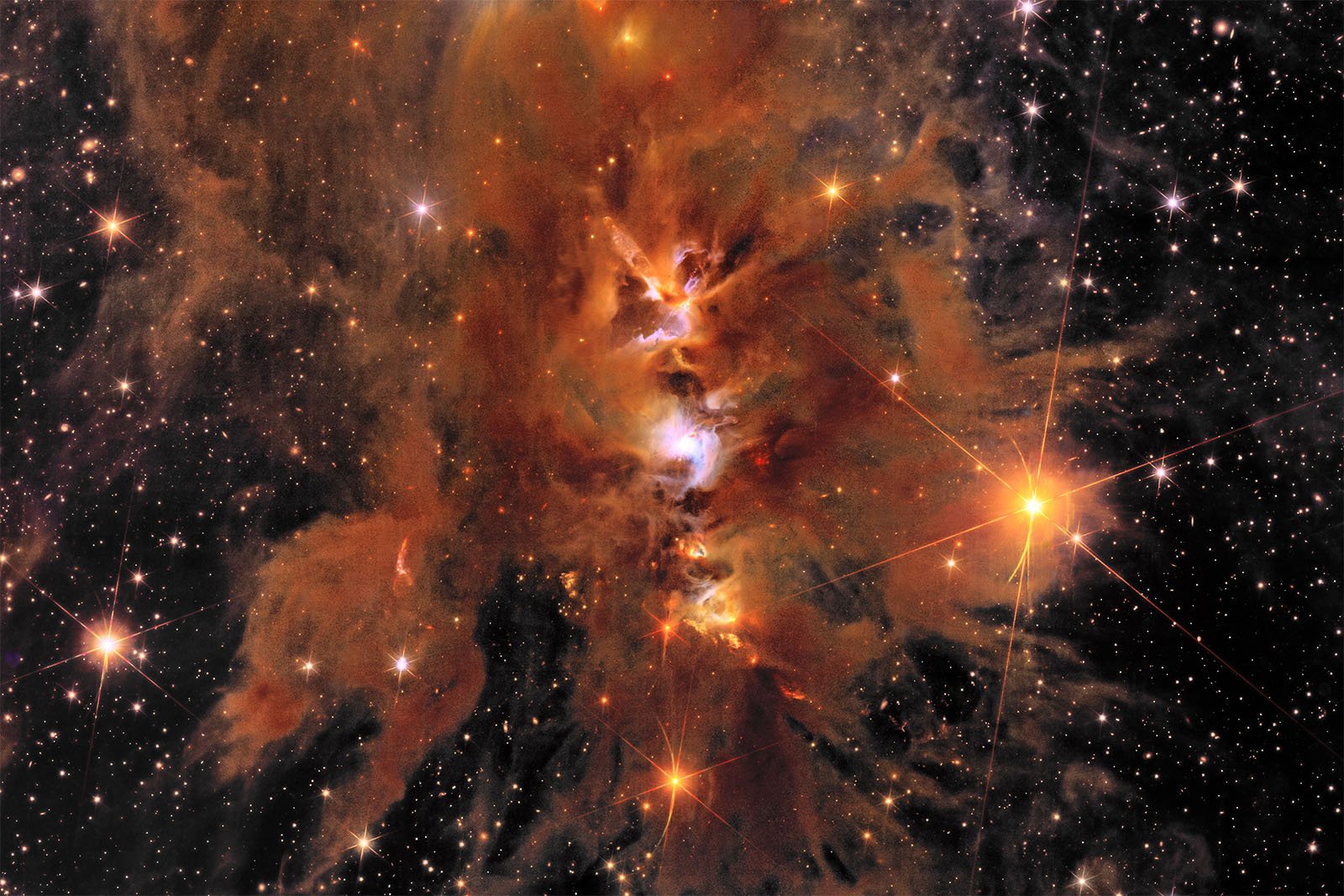
The data in this spectacular new image was captured in just about an hour of observation, which is remarkable. Messier 78 is located 1,300 light-years away in the Orion constellation.
NGC 6744
NGC 6744, 30 million light-years away in the constellation of Pavo, is also a familiar cosmic target for space probes. It was captured by NASA’s Galaxy Evolution Explorer more than a decade ago, but Euclid’s new unveils many more details.
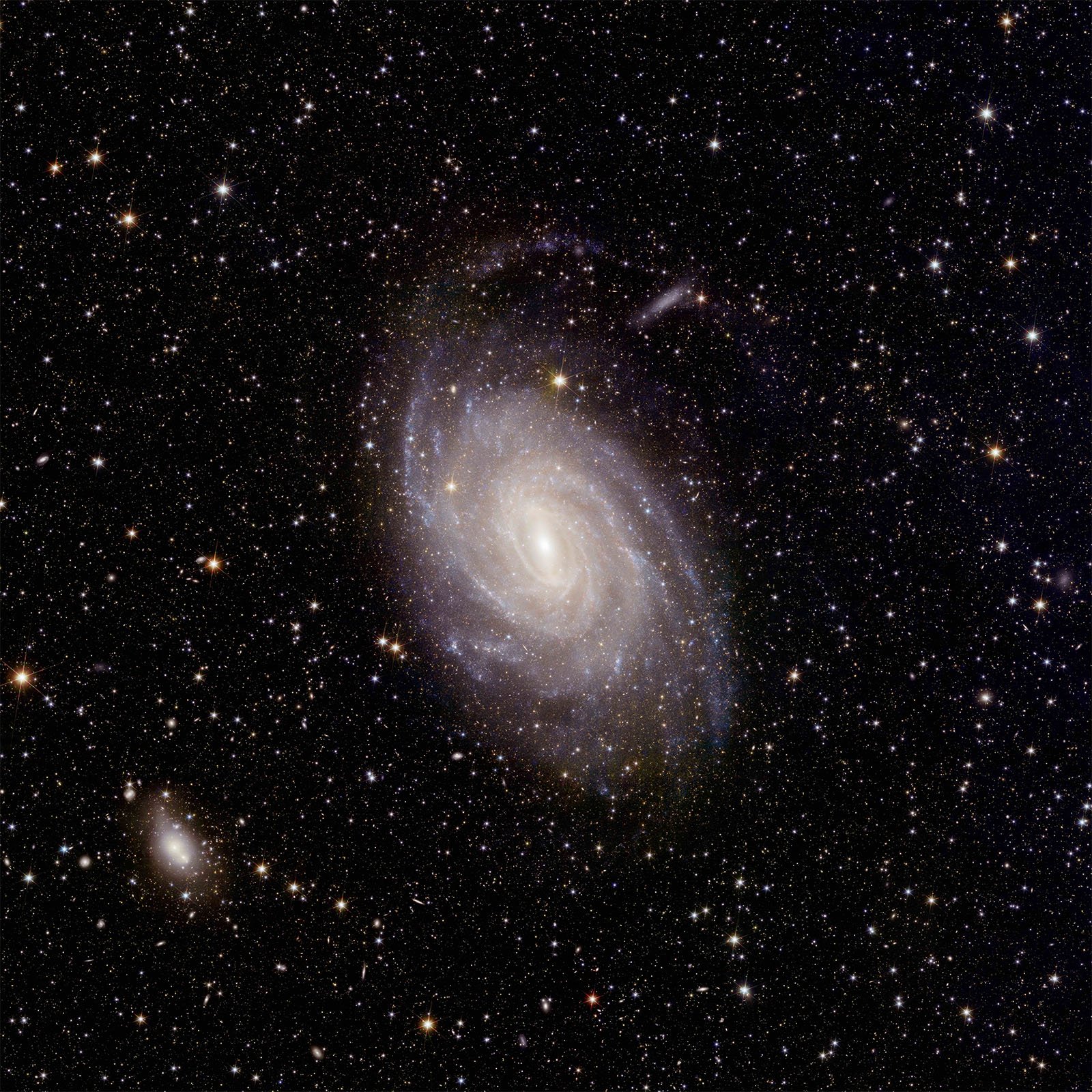
“Euclid’s observations will allow scientists to not only count individual stars within NGC 6744 but also trace the wider distribution of stars and dust in the galaxy, as well as mapping the dust associated with the gas that fuels new star formation. Forming stars is the main way by which galaxies grow and evolve, so these investigations are central to understanding galaxy evolution — and why our Universe looks the way it does today,” ESA explains.
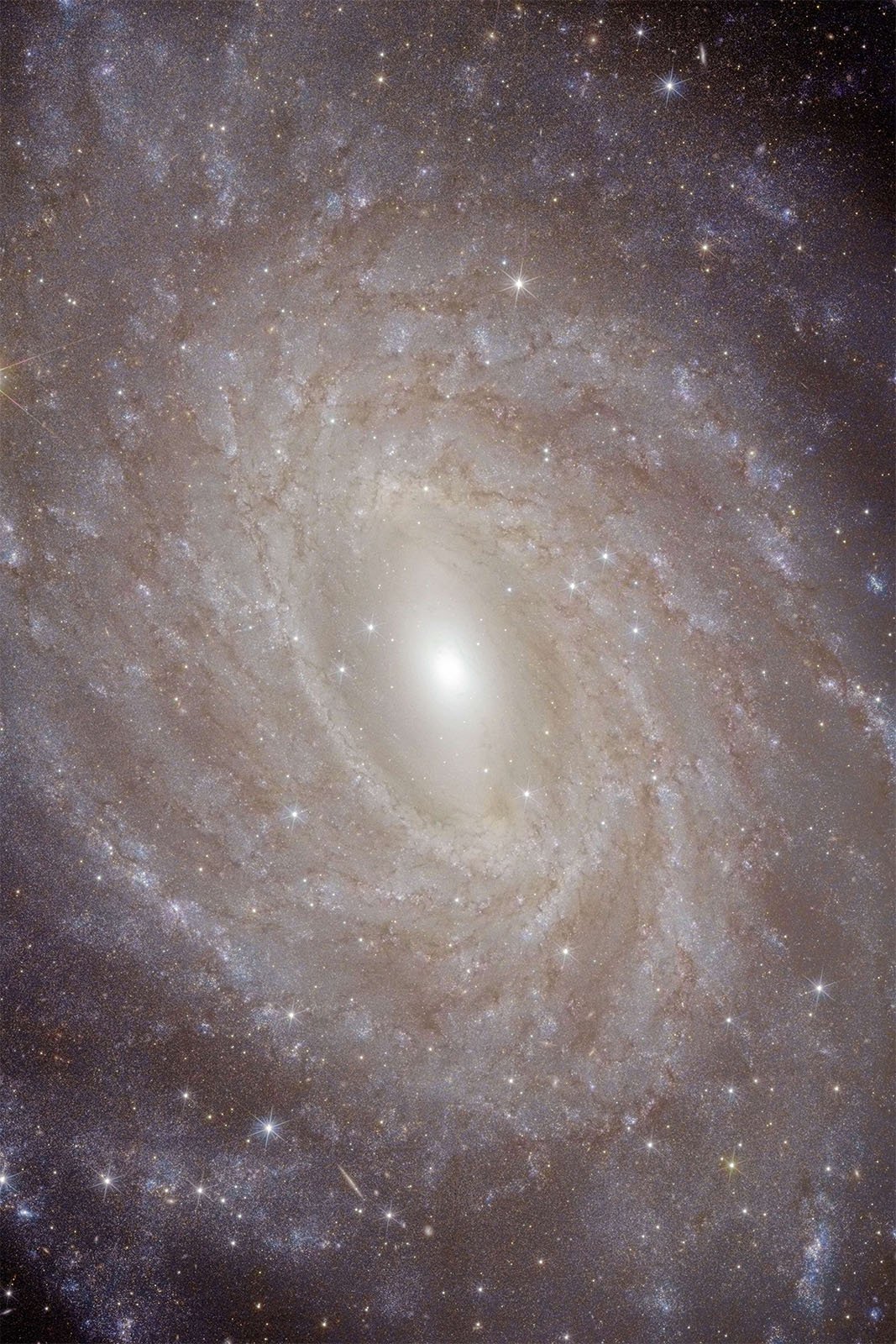
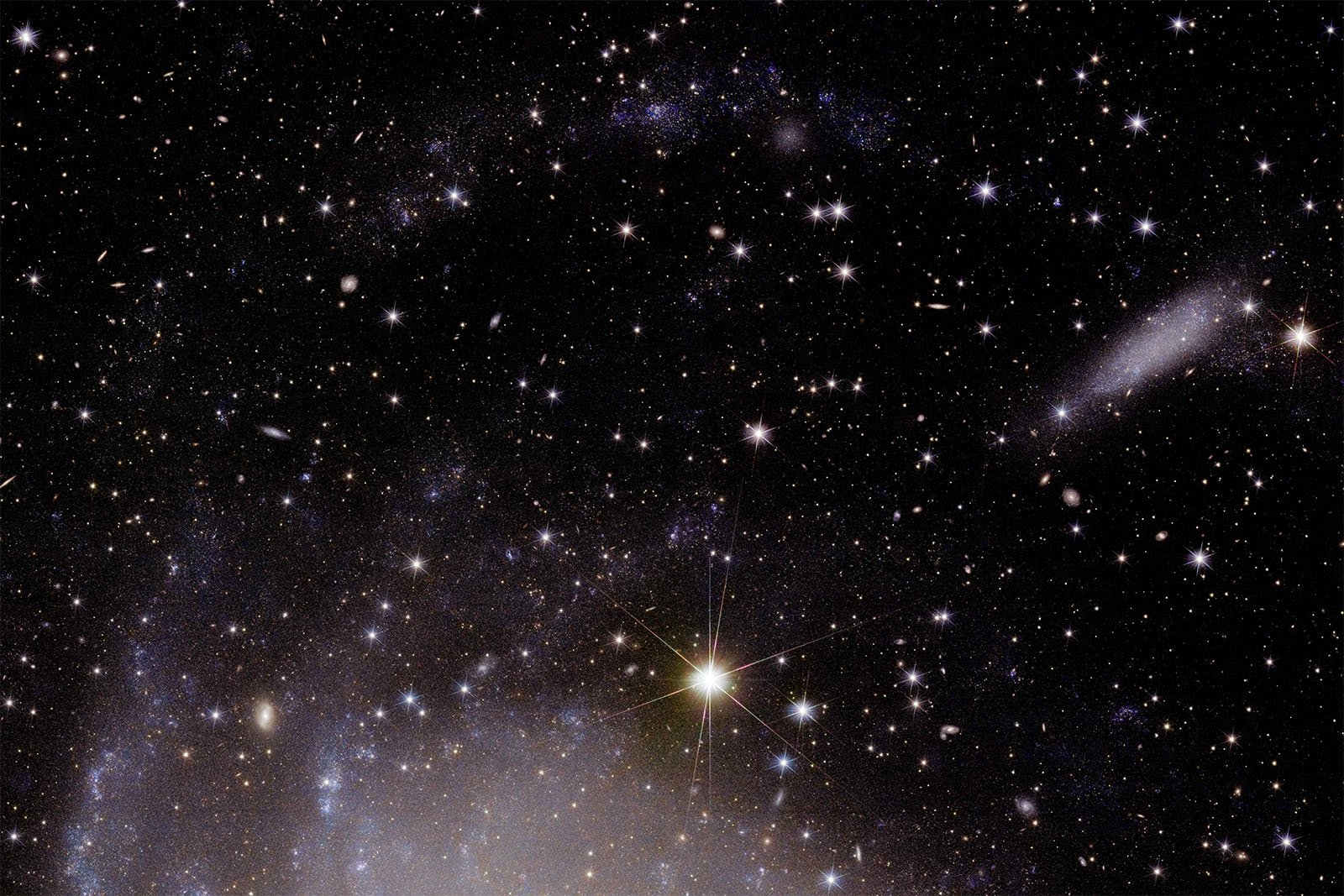
Abell 2764 (and Bright Star)
This image shows the galaxy cluster Abell 2764 in the top right region, comprising hundreds of galaxies and a vast halo of dark matter. Thanks to Euclid’s wide field of view, scientists can capture a complete view of Abell 2764 and measure its radius, see its outskirts, and view faraway galaxies all at once.
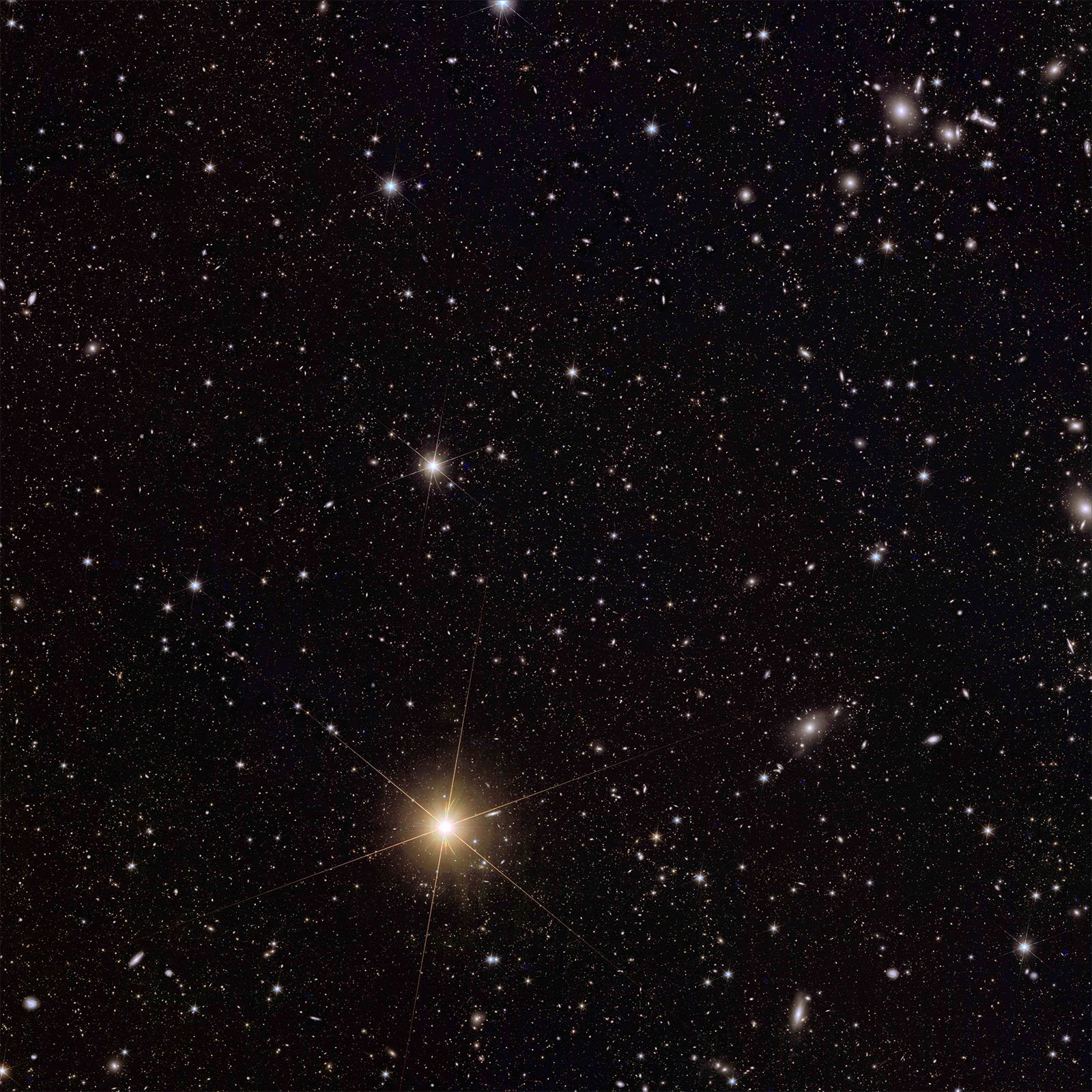
This image also shows Euclid’s impressive handling of bright light sources. A bright foreground star within the Milky Way Galaxy (V*BP-Phoenicis/HD 1973) is in the bottom portion of the frame, just left of the center. When viewed through a telescope, a star like this scatters light into a circular halo. However, Euclid was designed to minimize this scattering, ensuring that the star causes little disruption to the overall image. This allows scientists to see faint galaxies relatively “near” the star (they are, of course, very far away and only near the star in terms of directionality).
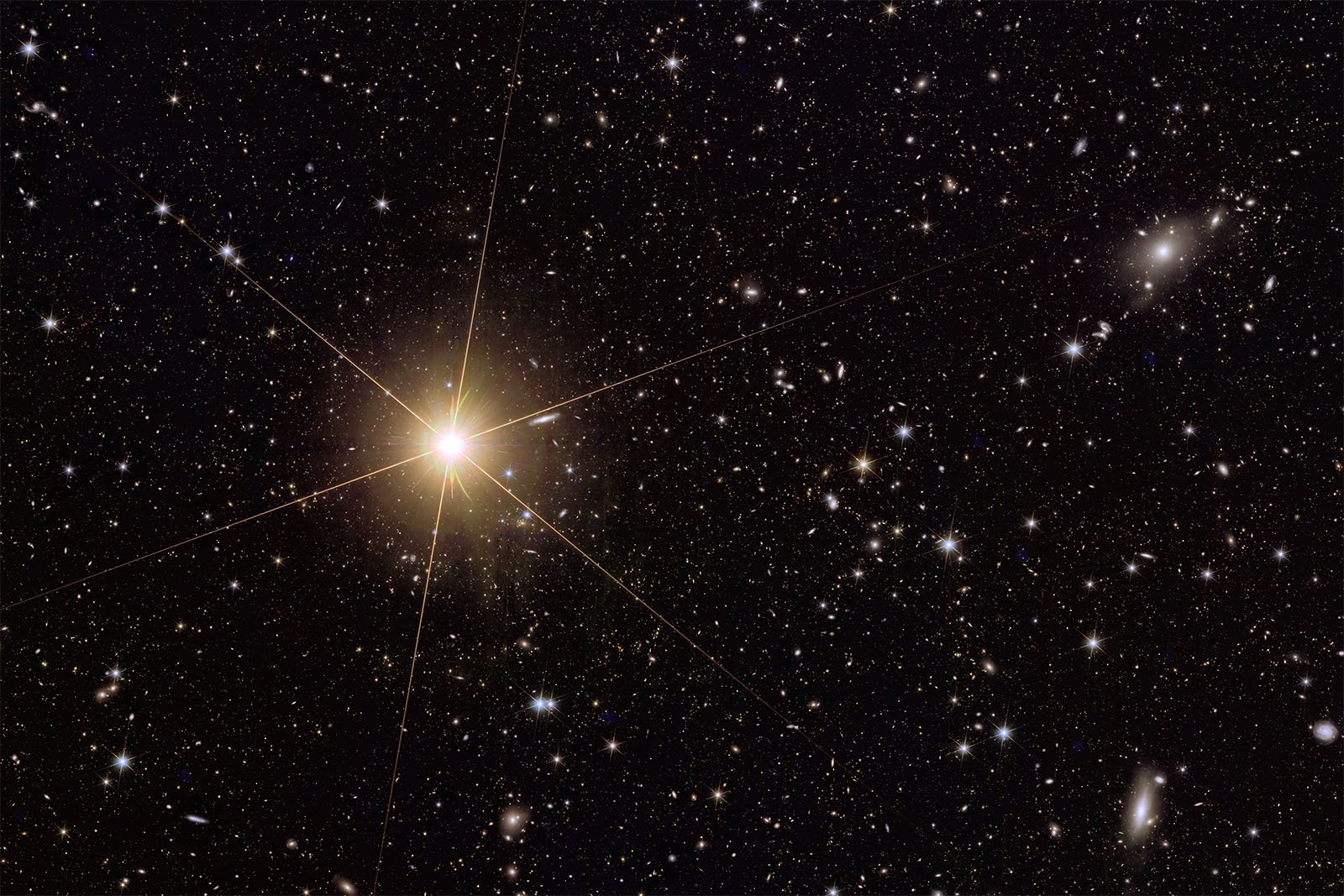
Abell 2764 is a billion light-years away in the direction of the Phoenix constellation.
Dorado Group
Rounding out the historic “first five” is the Dorado galaxy group. This target exhibits galactic evolution and merging, with “beautiful tidal tails and shells seen as a result of ongoing interactions.”
Scientists use images like this to study how galaxies evolve and help build a more accurate cosmic history. With new information about dark matter, scientists can better understand how galaxies are formed and interact with the interstellar material around them.
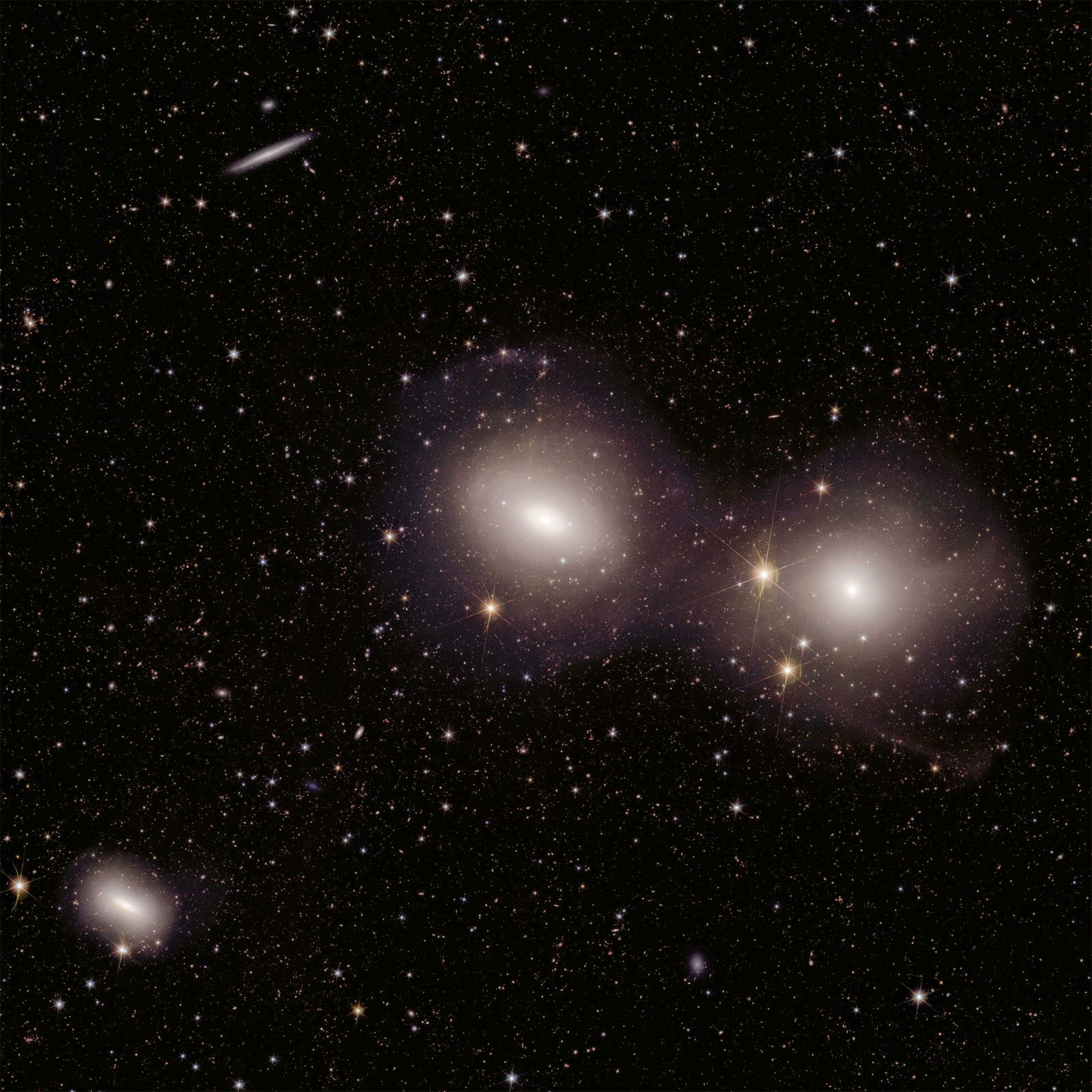
This image also showcases Euclid’s unprecedented versatility. The photo shows a wide array of visible galaxies, ranging from very faint to exceptionally bright, and exhibits a large field of view and incredible spatial resolution.
“Scientists are also using Euclid observations of the Dorado Group to answer questions that previously could only be explored using painstakingly small snippets of data. This includes compiling a full list of the individual clusters of stars (globular clusters) around the galaxies seen here. Once we know where these clusters are, we can use them to trace how the galaxies formed and study their history and contents. Scientists will also use these data to hunt for new dwarf galaxies around the Group, as it did previously with the Perseus cluster,” ESA explains.
What’s Next for Euclid?
“Euclid is a unique, ground-breaking mission, and these are the first datasets to be made public — it’s an important milestone,” says Valeria Pettorino, ESA’s Euclid Project Scientist. “The images and associated science findings are impressively diverse in terms of the objects and distances observed. They include a variety of science applications, and yet represent a mere 24 hours of observations. They give just a hint of what Euclid can do. We are looking forward to six more years of data to come!”
The early Euclid observations targeted 17 carefully selected nearby astronomical objects. However, moving forward, the space telescope will “tackle the biggest open questions in cosmology,” Pettorino adds. “And these early observations clearly demonstrate that Euclid is more than up to the task.”

“It’s no exaggeration to say that the results we’re seeing from Euclid are unprecedented,” says ESA Director of Science, Prof. Carole Mundell. “Euclid’s first images, published in November, clearly illustrated the telescope’s vast potential to explore the dark Universe, and this second batch is no different.”
Image credits: ESA/Euclid/Euclid Consortium/NASA